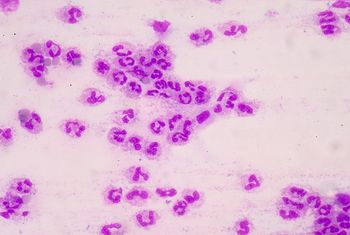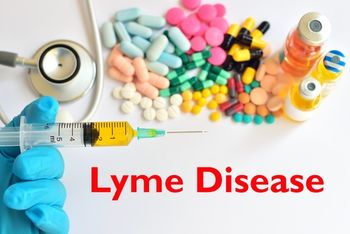
Can increased understanding of the role of the behavioral immune system reveal ways to address issues of bias in society?
Brian P. Dunleavy has been covering health and medical research for more than 25 years, for United Press International and EverydayHealth.com, among other outlets. He is also the former editor of Infectious Disease Special Edition. In addition, he has written on other subjects for Biography.com, History.com, the Village Voice and amNewYork, among others. He holds a master’s degree from the University of Missouri School of Journalism.

Can increased understanding of the role of the behavioral immune system reveal ways to address issues of bias in society?

According to a report from the Centers for Disease Control and Prevention, about 1 in 12 infants born to Zika-infected mothers will have a related birth defect.

A year on, the United States and most of the other countries affected by the Zika virus are better prepared to prevent outbreaks and control their spread. The proof is in the data.

Researchers believe they have developed an effective genetic roadmap to assist in the identification and characterization of infections in the lower respiratory tract.

Some 90% of healthcare organizations represented in one study had experienced a data breach in the past 2 years alone.

Recent research coming in from Weill Cornell Medicine/Memorial Sloan Kettering suggests that a possible cure for Zika virus may be hiding in plain sight.

As the IAS Conference on HIV Science wraps up this week, this Public Health Watch report takes a closer look at the challenges that remain when it comes to treating HIV.

A team of researchers assesses the impact of “Rory’s Regulations,” a set of mandates for hospitals in New York State that establish protocols for the diagnosis and treatment of sepsis.

Research coming in from Fernandes Figueira-Fundação Oswaldo Cruz finds that when it comes to diagnosing Zika virus infection in newborns, the eyes may have it.

Doctor Without Borders is criticizing countries and government agencies alike for seemingly downplaying the impact of tuberculosis around the world.

The new Senate healthcare bill released last week has died on the vine, even before it was formally put forward for deliberation and vote.

Senate Majority Leader Mitch McConnell and his Republican colleagues have written and released a new version of the American Health Care Act (AHCA) that addresses many outstanding concerns, but will it be enough?

With as many as 30 million new cases annually, resulting in more than 6 million deaths worldwide, new initiatives are focusing on an age-old problem—sepsis, and its related complications.

Researchers from EcoHealth Alliance have developed a predictive “map” that identifies the zoonotic host species that are “likely to harbor the next human virus” and documents the regions of the world where they can be found.

The World Bank recently announced plans to issue “pandemic bonds and derivatives” to help fund its Pandemic Emergency Finance Facility, which will “channel surge funding” to at-risk countries in the developing world.

The World Health Organization (WHO) is expanding its essential guidance to include diagnostic equipment and other vital technologies, following years of lobbying from clinicians, researchers, and industry groups alike.

The latest report from the Department of Health and Human Services reveals both good news and bad news on the health of our nation.

Opponents of the Medicaid cuts included in the American Health Care Act (AHCA) argue the cuts will significantly impact individuals living with HIV/AIDS as 40% of them depend on the government healthcare program for care.

Although treatment for chronic Lyme has provided some patients with relief of their symptoms, it may also expose them to complications related to the prescribed modalities.

The results of a recent Phase IB study show that the novel Ebola vaccine, V920, was well-tolerated and “stimulated a rapid onset of binding and neutralizing antibodies,” which persisted for up to 1 year.

Six members of the Presidential Advisory Council on HIV/AIDS (PACHA) recently resigned in protest of the current administration’s healthcare policy.

The results of a new study suggest a link between vitamin A and tuberculosis.

Challenges to public health are never-ending and experts argue that budget cuts that will be made through the American Health Care Act (AHCA) will have dire consequences to how we can respond.

The results of a new study in the Journal of the American Medical Association (JAMA) provide strong evidence that the goals of the United Nation’s Program on HIV/AIDS (UNAIDS) are indeed possible.

Incidence of superbug infections are certainly keeping the media in business, but is all the attention translating into an increased awareness of the importance of antibiotic stewardship?

In the recent installment of the series, “We Were There,” the Centers for Disease Control and Prevention share what they have learned since the 1993 Escherichia coli (E. coli) outbreak.

The Congressional Budget Office (CBO) finally released their "score" of the American Health Care Act (AHCA) and we take a look at the highlights.

This week’s Public Health News Watch focuses on what’s potentially behind the recent outbreak of measles in a Somali community in Minnesota.

This week’s Public Health News Watch captures the all-too-common story of TJ, an American who brings his ailing mother across the border into Mexico for healthcare that he is otherwise unable to afford at home.

Researchers from Zhejiang University in China take a closer look at how the incidence of different infectious diseases have changed in the first decade after the SARS outbreak.